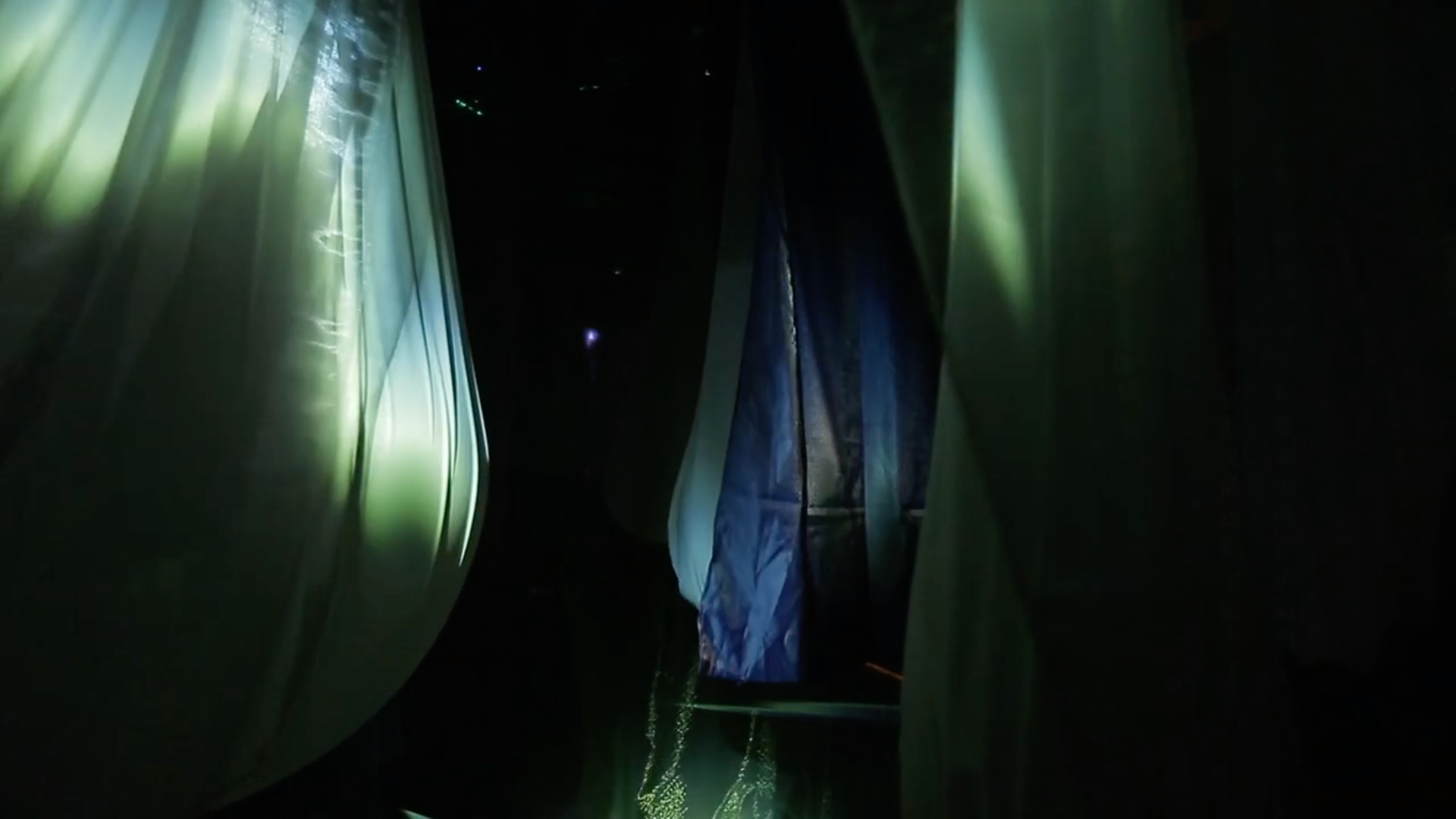交大跨領域藝術團隊與清華大學電機系共同參展作品
開幕式: 2015/2/7 (六)上午10:00 ~12:00
開放時間:週一到週日09:00-17:00 (2/18-2/23春節休館)
展場地址:國立新竹生活美學館‧新竹市東區武昌街110號
電話:(03)5263176轉201
展覽簡介
交大跨領域藝術團隊與清華大學電機系再度攜手合作,以作品《青搖‧春曳》光影互動藝術裝置參與今年新竹生活美學館的「燈籠」新年特展,主辦單位特別邀請了多位燈籠藝師與交大跨領域藝術團隊一起展出作品,期待傳統與創新的碰撞,爲觀眾帶來充滿當代性和創新感的燈節全新體驗!
104年新年特展,以古老精緻的燈籠工藝延續熱鬧的年節傳統,以新一代的創意與活力推展新興的科技藝術,且看創新與傳統碰撞出無限可能的火花,為104年點亮盞盞亮麗明燈,一同迎向嶄新的一年。
Exhibition introduction
With their work of light and shadow interactive art installation, “Waves in the Youth of Spring”, the transArt NCTU team and the Department of Electrical Engineering of NTHU have joined again to participate in this year’s New Year special exhibition, “Lantern” at the National Hsinchu Living Arts Center. Organizers have specially invited the transArt NCTU team and many traditional lantern artists to exhibit their works together. It is a wonderful opportunity for the collision of tradition and innovation, offering the audience a brand-new experience of the Lantern Festival full of contemporariness and ingeniousness. The 2015 New Year special exhibition carries on the exciting festival tradition with the ancient, exquisite craft of lantern, and promotes the new-emerging technology art with the creativity and vitality of the new generation. Let’s all enjoy as innovation and tradition collide to create sparks of limitless possibilities, lighting up the brilliant, dazzling lanterns for 2015, welcoming a whole new year to come.
2015《青搖‧春曳》 from transArt NCTU on Vimeo.
作品創作理念
光影互動藝術裝置作品《青搖•春曳》把生命中的自然實境融合綠光的幻象景致,將內外的時間軌跡打散,透過科技與藝術的手法予以錯位拼接,在虛實交錯的時空中,創造幻化流動的影像,再現春天,繼而引發觀者層層的詩意想像:
輕搖,輕搖,綠意從凝視的眼瞼中初現了;
輕搖,輕搖,春天從擺曳的搖籃中溢出了。
青春,青春,輕搖春意;
青春,青春,青搖春曳。
春天是充滿生機的時節,是充滿色彩的光譜,是讓人覺得青春洋溢的季節。微風吹著,一切都是輕柔溫暖的。創作者利用加速感測器、機械及半透薄紗的裝置,邀請觀眾體驗春光搖曳的感覺,並經由互動的過程,讓展場呈現充滿趣味與即時的動感。加上複合媒材與光影交織的視覺效果及音景環繞,讓觀眾彷彿置身於一個綺麗的幻象迷宮中。
Artistic Statement
“Waves in the Youth of Spring”, the light and shadow interactive art installation, blends the nature reality in life with the illusionary surroundings of green light, breaking up the time trail both inside and installation pieces the digital and the physical together, creating an illusionary flowing imagery in the time and space. Thus, the artists have created a virtual “spring”, and initiated vast poetic imagination from the audience:
From behind the gazing eyelids,
Swaying greenery first peeks.
Later from the swinging basket,
Waving spring overflows.
Swaying is the softness
Of flowing spring;
Waving is the green
Of springing youth.
Spring is a time full of vigor, a light spectrum full of color, a season brimming with youth. With the gentle breeze, everything seems soft and warm. Using the device of an accelerometer, mechanics, and semi-transparent gauze, the artists invite the audience to experience the splendor of spring waving and flowing before them. Through the interaction, the artists fill the exhibition space with fun and instant activeness. With mixed media, visual effect of intertwining light and shadow, and surrounding soundscape, it is as if the audience was in an enchanting illusion maze.
如何跟作品《青搖‧春曳》互動?
《青搖‧春曳》是交大跨領域藝術團隊和清華大學電機系感知研究團隊合作的作品,由清華團隊提供三軸感應技術,來偵測觀眾推球的速度、動作及姿態,以此資料來和作品進行各式的互動。展區內有3顆最大的球體,觀眾只要用手推動其中任何的一顆大球,其中的三軸感應器就能將所擷取到的資料經過運算,轉成控制訊號,啟動投影影像顏色的變化和流動的速度;同時,控制訊號也會傳到大球附近的小球,使其隨之搖擺,讓觀眾在其中,能親身體驗春風搖曳的色光變化和明暗節奏的流動,在光影波動中體驗互動的感知經驗。建議觀眾在極短的時間內,輪流推動每顆大球一下,這樣可以啟動三組感應器和三台投影機的流動影像,會更能夠營造出色彩斑斕的春天意象。
How to interact with “Waves in the Youth of Spring”?
“Waves in the Youth of Spring” is a joint production of the transArt NCTU team and the NTHU EE Cognitive Applications R&D Group. The NTHU team provides the triaxial sensor technique to detect the speed, action, and posture of the audience pushing the ball, the data of which is then used to interact with the work in various ways. There are three large spheres in the exhibition space. Once any of the three is pushed, the triaxial sensor will calculate the received data, convert it into control signals, and initiate the projected image’s change of color and speed of flow. In the meantime, the control signals will be transmitted to the small balls around the big balls, making them move accordingly, granting the audience a direct up close contact with the change of light and color in the splendor of spring, and the flow in the rhythm of light and shade, providing them with a perception experience of interacting in the wave of light and shadow. It is recommended that the audience push each big ball once in turn in an extremely short time, because it will start the three sets of sensors and the flowing image from the three projectors, creating an even more bright-colored imagery of spring.
創作成員
交通大學跨領域藝術團隊
應用藝術研究所 賴雯淑副教授
博士生:陳宜惠
互動影像設計:王郁勳
互動技術成員
清華大學電機系感知應用研發團隊
電機系馬席彬 副教授
碩士生:鍾國君、林佑勳
主辦單位:國立新竹生活美學館
協辦單位:國立交通大學頂尖計畫辦公室/文化研究國際中心‧交通大學跨領域藝術團隊‧交通大學藝文中心
「點亮藝盞燈-104年新年特展」
「新竹生活美學館」與「交大跨領域藝術團隊」的對話
Lighting up arts of lantern—2015 New Year special exhibition
Dialogue between the National Museum of the Hsinchu Life Aesthetics and the transArt team of NCTU
Q1:作品〈青搖‧春曳〉視覺影像的部分是由交大跨領域藝術團隊設計,而動力裝置的部分是由清華大學電機系感知應用研發團隊負責,是什麼靈感或機緣促成這次的合作?
A:自2014年的《林中路》賴雯淑光纖藝術裝置展、《食間》互動藝術裝置展開始,交大跨領域藝術團隊就與清華大學電機系研究團隊合作。這次的合作是由清華團隊提供九軸加速器,來偵測球搖動時的姿態和速度變化,用來進行各式的互動。
Q1: The visual effect of “Waves in the Youth of Spring” was designed by the transArt NCTU team, and the kinetic installation was designed and executed by the NTHU EE Cognitive Applications R&D Group. What is the inspiration or the chance that helped bring about the cooperation?
A: Since the exhibitions in 2014, “Off the Beaten Track”, a fiber optic art installation by Wen-Shu Lai, and “In My Tummy, In My Time”, an interactive art installation, the transArt NCTU team and the NTHU EE Cognitive Applications R&D Group have been working together. This time the NTHU team provides the 9-axis accelerometers to detect the movement and the change in speed as the balls move, so as to carry out all kinds of interactions.
Q2:據悉之前交大跨領域藝術團隊的作品多在台北展出,此次在新竹在地展出有什麼樣的感想?
A:自2008年以來,交大跨領域藝術團隊就活躍地在國外和台北發表作品,這次在新竹生活美學館展出,是很好的機會把團隊多年來努力的成果與新竹民眾分享。新竹地區有交大、清大、工研院和科學園區等單位在研發高科技,這些年來也先後跟交大團隊有多次的合作交流,希望將來能有更多的機會把這些成果在新竹展出,為在地的文化藝術發展盡一份心力。
Q2: It is reported that the transArt NCTU team used to exhibit their works in Taipei.How do you feel about this time exhibiting in the school’s local city of Hsinchu?
A: Since 2008, the transArt NCTU team has vibrantly exhibited works both overseas and in Taipei. Exhibiting at the National Hsinchu Living Arts Center this time is a very good opportunity to share with the people from Hsinchu the achievement of our team’s hard work over the years. In Hsinchu, institutions like NCTU, NTHU, Industrial Technology Research Institute (ITRI) and Hsinchu Science Park have been developing high technology. Over the years they have all, separately, worked and exchanged ideas with the NCTU team, hoping for more opportunities in the future to exhibit our achievements in Hsinchu, as to contribute to the local development of culture and art.
Q3:國立新竹生活美學館的參觀民眾年齡層遍佈較廣,有小朋友也有社區樂齡民眾,會不會擔心這樣的科技藝術較不能讓觀眾接受?
A:在展場放置更詳細的作品文字解說是需要的。另外,若能安排團體導覽活動,供機關團體來預約,那麼現場解說的方式就可依觀眾的年齡層來做調整,會有助於大眾的理解和參與度。
Q3: The National Hsinchu Living Arts Center has visitors with a wide age range,including children and senior citizens. Are you worried if such technology art would be less acceptable for the audience?
A: It is necessary to display detailed explanation for the works at the exhibition. Also, if we can arrange group guidance services for institutions to make reservations, then the approach of guidance can be adjusted according to the audience’s age, which would help people’s comprehension and participation.
Q4:展場配樂和往常展場聽得到的輕音樂大不相同,是較隨機、空靈、甚至帶點詭譎的音效,請問在配樂的設計上有什麼巧思?
A:春天常給人一種處處充滿生機的感覺,若仔細觀察,就會發現許多出其不意的驚豔。這次所設計的聲音就是希望讓人能夠豎起耳朵仔細聆聽,發現其中隨機卻又帶有韻律的春之節奏,如同許多當代音樂,一開始不見得就能為大眾所接受,但是這種新的聽覺感受正是藝術家所追求的,讓聲音不僅僅是配樂,也同時希望提供觀眾一個視覺與聽覺整體的融合。若跟傳統燈籠作品搭配,也不會破壞其風采,更何況這次的燈節作品,也有許多在傳統中求新求變的創意作品。
Q4: The music used at this exhibition, widely different from the soft music usually heard at exhibitions, is a more spontaneous and ethereal sound effect, even a little odd. What was the idea behind the design of the music?
A: When we think of spring, we think of vitality everywhere. If we look closely, we will discover many unexpected wonders. The sounds designed for the exhibition are to make people prick up their ears and listen carefully, discovering the cadence of spring, spontaneous but with rhythm. Like many contemporary pieces of music, it might not seem acceptable for the general public at the start, but the novel auditory perception is exactly what the artists are looking for. They turn sounds into something more than just music, hoping to offer the audience an integral fusion of vision and audition. When put together with traditional lantern works, the sound is not deprived of its brilliance. Besides, among the works in this year’s Lantern Festival, many creative works seek novelty and change in tradition.
Q5:這次和許多傳統燈籠作品一同展出,無論是視覺上或互動體驗均和傳統燈籠大異其趣,請問這樣的結合,對你們帶來什麼樣的靈感或啟發?
A:跨領域藝術本來就不單指科技藝術,它更是跨越界域,異種混生的藝術新可能。除了可被理解為不同領域或不同文化間的橫向對話,其實也同時是朝縱軸的轉化與橫軸的跨越,可視為另一種經交錯詮釋、來回對話後,於不同文明、新舊時代之中所萌發出的新枝綠葉。因此這次作品《青搖‧春曳》能與許多傳統燈籠作品一同展出,正是開啟傳統與現代藝術的對話與交流,也是傳統文化新定位與再生的另一個面向。
Q5: At an exhibition with various traditional lantern works, wide distinctiveness and disparate features are found, no matter visually or in terms of interactive experience. What kind of inspiration or realization has such combination brought you?
A: Transart never merely means technology art. It is more of a field-crossing, diversely mixed new possibility of art. Aside from a horizontal conversation between different domains or different cultures, it is also, in fact, at the same time a vertical transformation and a horizontal traverse. It can be seen, after intersecting interpretation and back-and-forth conversation, as newly sprouted greens from different civilizations and generations of old and new. Hence, “Waves in the Youth of Spring” being exhibited with many traditional lantern works opens up the conversation and exchange between tradition and contemporary art, and appears as another aspect of the new positioning and revival of traditional cultures.
Q6:因為作品的燈光效果需要近乎全暗的空間才能顯現,但觀眾反應這和明亮的春光、色彩斑斕的春天意象有些差距,關於這部分是不是能和觀眾解釋一下燈光配置的用意?是本來就設計要在這樣昏暗的空間呢?技術上無法克服呢?往後我們是不是有機會在明亮的空間欣賞類似的互動藝術?
A:作品〈青搖‧春曳〉是意圖在全黑的展場內營造光影波動、春風搖曳的春天意象。依展場的條件,目前只能靠投影設備和數位影像設計,以及機械互動裝置來達到色光變化和明暗節奏的流動,以此引發觀眾的互動感知經驗。若想在技術上克服展場較為昏暗這一點,可調整最靠近投影機前面的那一面紗,讓投影機的影像能先在紗的正前方完整地顯像,之後再穿透紗投射到後面的球體上,這樣觀眾會較容易看到繽紛的春天色彩。但若要完全創造春天斑斕明亮的春光色彩,那可能就需要不一樣的展出空間、高流明投影設備和不同的影像設計。將來若有適當的展出機會和條件,我們當然很願意作出這樣的作品跟大家分享。
Q6: For the light effect of the work to show, it requires a space that is almost completely dark. The audience responds that this seems quite different from the glorious splendor and colorful imagery of spring. Is it possible to explain to the audience the purpose of the lighting plan? Was it originally designed to be set in a dim space? Or is it a technical problem? Is there any chance for us to see a similar interactive art in a brighter space in the future?
A: “Waves in the Youth of Spring” is meant to create an imagery of spring with flowing light and shadow and gentle spring breeze in a pitch black exhibition space. Due to the condition of the space, so far we can only rely on projection equipment, digital image design, and mechanical interactive installation to achieve the change in light and color and the flow in the rhythm of light and shade, which would trigger the audience’s interactive perception experience. If we’d like to tackle the technical problem of the dim space, we could adjust the piece of gauze nearest to the front of the projector, allowing the image to be fully projected right in front of the gauze then go through the gauze and onto the sphere behind. That way it would be easier for the audience to see the dazzling colors of spring. However, to thoroughly create gorgeous, glowing colors of spring, we would need a different exhibition space, high lumen projection equipment, and different image designs. If there is a befitting exhibition opportunity and condition in the future, we would certainly be willing to create a work as such and share it with everyone.

